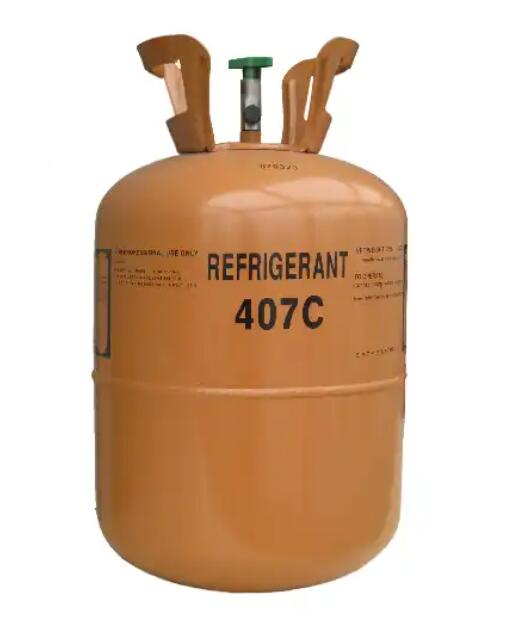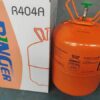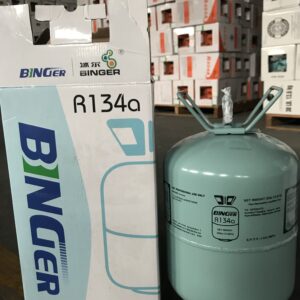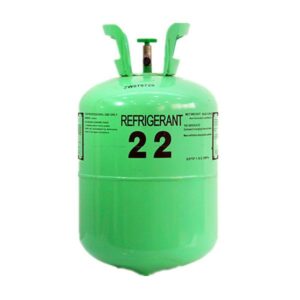R407C refrigerant China Chinese manufacturers and suppliers
$75.00 原价为:$75.00。$42.00当前价格为:$42.00。
R407C is an environmentally friendly refrigerant that does not damage the ozone layer and is composed of R32 refrigerant, R125/refrigerant, and R134a refrigerant in a certain proportion.
|
Model Number
|
R-407c
|
|
Purity (%)
|
≥99.8
|
|
Moisture (%)
|
≤0.001
|
|
Acidity (%)
|
≤0.00001
|
|
Residue on Evaporation (%)
|
≤0.01
|
|
Chlorides Test (%)
|
≤0.0003
|
|
Appearance
|
Colorless, no turbid matter
|
|
Odor
|
No strange stench
|
R407C is an environmentally friendly refrigerant that does not damage the ozone layer and is composed of R32 refrigerant, R125/refrigerant, and R134a refrigerant in a certain proportion.
R407C refrigerant Introduction
We are the R407C refrigerant China Chinese manufacturers and suppliers.
R407C has become a long-term substitute for R22 due to its very similar characteristics and performance, and is used in various air conditioning systems and non centrifugal refrigeration systems.
R407C can be used in the original R22 system, without redesigning the system. Only a small number of components in the original system need to be replaced, and the mineral refrigeration oil in the original system needs to be replaced with a lubricating oil (POE oil) that is soluble with R407C. R407C can be directly filled to achieve environmentally friendly replacement of the original equipment.
Due to R407C being a mixed non azeotropic working fluid, in order to ensure that its mixing composition does not change, R407C must be filled in liquid form. If refrigerant leakage occurs in the R407C system and there is a significant change in system performance, the remaining R407C in the system cannot be recycled and reused. It is necessary to empty the remaining R407C refrigerant in the system and refill it with new R407C refrigerant.
R407C Refrigerant Property.
The ODP value of R407C is zero, and the GWP value is higher. The boiling point is relatively close to R22. At standard atmospheric pressure, its boiling point is -43.4~36.1 ℃. The temperature slipped from -36.1 ℃ to -43.4 ℃. But when applied to air conditioning systems, its vapor pressure is 10% higher than R22.
Under air conditioning conditions, its unit volume cooling capacity and cooling coefficient are 5% lower than R22; Under low temperature conditions, although the cooling coefficient does not change much, the cooling capacity per unit volume is 20% lower.
The poor heat transfer performance of R407c directly affects the change of refrigerant.
R407c cannot be miscible with mineral based lubricants, but can dissolve in polyester based synthetic lubricants. There are high requirements for drying.
R407C Refrigerant Thermal Characteristics
Molecular formula: CH2F2/CHF2CF3/CF3CH2F
Boiling point, ° C: -43.4-36.1
Steam pressure at 25 ° C, MPAABS: 1.174
Liquid density (25 ° C), kg/L: 1.136
Critical temperature, ° C: 86.74
Critical pressure, MPa: 4.619
Gas heat capacity (1atm, 25 ° C), KJ/(kg · K): 0.829
Liquid heat capacity (1atm, 25 ° C), KJ/(kg · K): 1.54
Gas thermal conductivity (25 ° C), W/(m · K): 0.01314
Liquid thermal conductivity (25 ° C), W/(m · K): 0.0819
ODP: 0
GWP: 1.526
Odor: Mild ether odor
Color: colorless and transparent
Chemical stability: Stable, but should avoid open flames and high temperatures
Incompatibility with other materials: Incompatibility with active metals, alkali metals, alkaline earth metals such as aluminum, zinc, barium, etc
Polymerization: No polymerization reaction occurs
Its composition is (by weight): HFC-32% (w/w): 24 ± 2
HFC-125,% (w/w): 26 ± 2
HFC-134a,% (w/w): 50 ± 2
Moisture, mg/kg ≤ 10
Acidity, mg/kg, ≤ 1
Evaporation residue, mg/kg, ≤ 10
Non condensable gas in the gas phase,% (v/v), ≤ 1
R407C Refrigerant Application
R407C is a ternary non azeotropic refrigerant introduced as a substitute for R22. In actual replacement, only the lubricating oil, dryer, and other secondary parts need to be changed. In order to improve the characteristics of ester oils that are prone to decomposition into residues, additives are often added to the system. When using, it is best to choose a countercurrent heat exchanger to fully utilize its advantages. In addition, the area of the condenser and the flow rate of the cooling medium also increase. R407c also has the characteristics of cleanliness, low toxicity, non combustible, and good cooling effect, and is widely used in the air conditioning industry.
成为第一个“R407C refrigerant China Chinese manufacturers and suppliers” 的评价者 取消回复
相关产品
Refrigerant,cryogen
Refrigerant,cryogen
Refrigerant,cryogen
Wholesale price r 410a refrigerant gas r410a refrigerant made in China
Refrigerant,cryogen
R404A air conditioning refrigerants China supplier and Manufacturer








评价
目前还没有评价